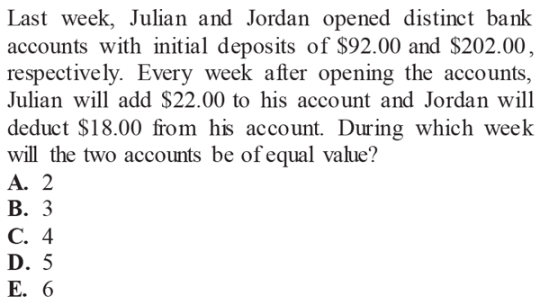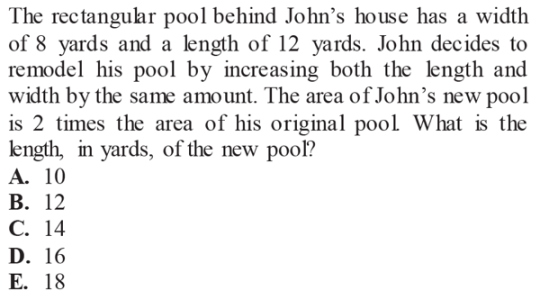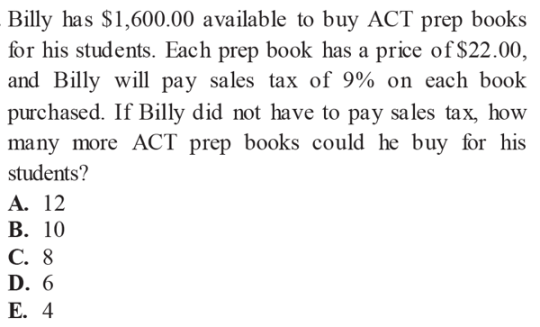
It’s okay to admit it: most everyone loves ACT math word problems. There are few things in life more satisfying than carefully reading through a word problem, defining your variables, putting together a plan, checking your units, and finally solving. Not to mention the joys of learning new and useful applications of your math knowledge to real-world situations, like estimating the height of a tree based on the length of its shadow or calculating the odds of pulling that red sock from your sock drawer filled with blue and green socks. But what if you’re one of those rare unfortunates who struggle with these problems? Are you condemned to permanently wander the wastelands with the other math illiterates? In short: no. Follow these simple steps to rejoin your word-problem-solving friends and neighbors:
1) Expect to read any word problem twice. All word problems are designed to confuse you by front loading details, hoping that you’ll try tohold everything in your head as you read the actual question.
2) Focus on understanding the question on your first pass through. What are you solving for? What are the units? Putting these questions in your own words (and not just repeating the last sentence of the problem) can be extremely helpful in focusing you on what you need to solve for.
3) Scan the answer choices. A few may immediately appear as extremely unlikely and can be eliminated from consideration. The remaining choices will give you an idea of the range your answer will fallwithin.
4) Read again, but for details. This is where the majority of your thinking and solving will happen, so take your time here. Isolate the relevant numbers and try to organize your thoughts graphically. Very few higher difficulty word problems can be solved in your head, so get everything written out and organized.
5) Solve and bask in the glow of your own brilliance for ONE second, and then move on to the next question!
Let’s walk through an example:
Parking a car at a short-term airport parking lot costs $2.50for the 1st hour or any part thereof, $2.25 for the 2nd hour or any part thereof, and $1.75 for each additional hour or any part thereof after the 2ndhour. Your ticket shows that you parked your car in this lot from 9:38 a.m. to 2:17p.m. on the same day. What is the cost of parking your car in the short-term airport parking lot, according to this ticket? (Note: Prices include all applicable sales tax.)
A.$10.00B. $11.14C. $11.75D. $12.50E. $13.50
That’s all there is to it! Practice your newfound word problem solving expertise on the problems below.


